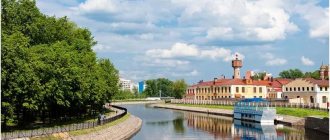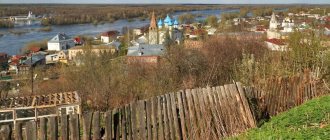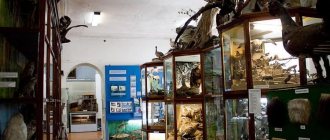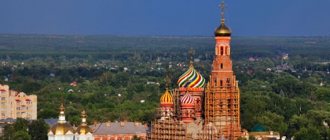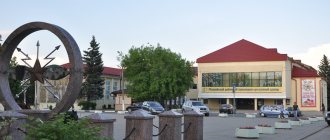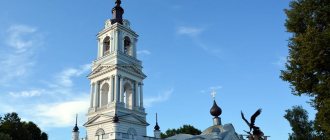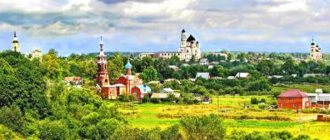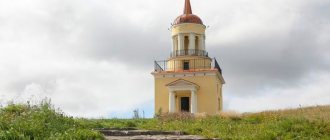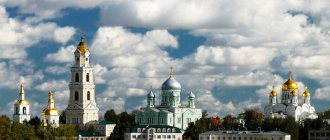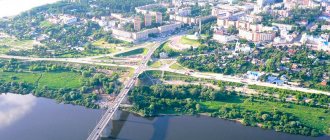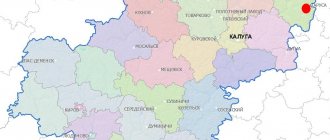Feodorovsky Monastery, Pereslavl-Zalessky
© Victor Bashkir
The Golden Ring of Russia - this beautiful phrase is the name of a group of tourist routes that are laid through ancient Russian cities, which have still preserved many unique cultural and historical monuments, and are also centers of folk crafts. This route was developed over 40 years ago, and the author of its name is the Soviet and Russian writer and art critic Yuri Bychkov, who wrote a series of essays of the same name for the newspaper “Soviet Culture” in 1967.
The main cities of the Golden Ring of Russia are the cities belonging to the Moscow, Yaroslavl, Tver, Kostroma, Ivanovo and Vladimir regions. According to generally accepted data, their list consists of eight cities: Vladimir, Suzdal, Ivanovo, Kostroma, Yaroslavl, Rostov the Great, Pereslavl-Zalessky and Sergiev Posad. However, there is other data according to which the Golden Ring includes twelve cities - the cities of Alexandrov, Yuryev-Polsky, Plyos and Uglich are added to the above. But this list can safely be called debatable.
You should also know that the composition of cities and their number may vary on each specific route. For example, a full circle trip includes more than 12 cities of the Ring, and the length of the route itself is approximately 1000 km. The classic route involves visiting the main eight cities. In most cases, routes consist of 4–7 cities, and the tourist programs themselves (calculated independently or provided by travel agencies) can last from 2–3 to 9–10 days. The most popular are tours within 5 days.
Temples of the Golden Ring of Russia (42 photos)
The Golden Ring of Russia necessarily includes 10 Moscow churches. Among them are the Kremlin cathedrals of extraordinary beauty, interesting paintings, and the famous churches of St. Basil and Christ the Savior.
In the ancient village of Bogolyubovo, great Russian shrines have been preserved - the Church of the Intercession on the Nerl and the most beautiful cathedrals. The Golden Ring includes churches in Vladimir, Suzdal, Alexandrov, Uglich and other ancient cities, striking in their splendor and at the same time extraordinary simplicity.
Annunciation Monastery in Murom
Church of the Intercession on the Nerl on a cloudy day
Gate of the Tolga Monastery in Sergiev Posad
Bell tower of St. Nicholas Cathedral in Kalyazin
Domes of the Church of the Nativity of the Virgin Mary and the Staircase Tower in Bogolyubovo
Spaso-Yakovlevsky Monastery on the shore of Lake Nero
Boris and Gleb Monastery in Uglich
Church of Boris and Gleb in Kideksha
Ipatiev Monastery in Kostroma
Svyato-Vvedenskaya Island Hermitage
Alexandrovskaya Sloboda in winter Yuryev-Polsky
Solotchinsky Monastery in winter Suzdal
Holy Trinity Ipatiev Monastery in Uglich
Smolensk Church in Suzdal
Tent Church of Peter the Metropolitan in Pereslavl-Zalessky
Church of Seraphim of Sarov in Aleksandrov
View from the Volga embankment to the Resurrection Church in the city of Plyos
Assumption Cathedral in Dmitrov
Church on the autumn shore in the city of Tutaev
Trinity-Tikhvin Church in Dmitrov
Churches of Rybinsk in evening illumination
Children's tourist group at the temple in Suzdal
Tourists near the monastery in Pereslavl-Zalessky
Pskov Kremlin in winter
Winter landscape with a view of the Trinity Lavra of St. Sergius
Domes of the Trinity-Sergius Lavra in the snow
Holy Bogolyubsky Convent
Nikolo-Solbinsky Monastery
Resurrection Monastery in Murom
The walls of the monastery in the center of the city of Yuryev-Polsky
Nikolsky Monastery in Gorokhovets
Dormition Goritsky Monastery in winter Pereslavl-Zalessky
Churches in evening Uglich
Murom Spaso-Preobrazhensky Monastery
Michael the Archangel Monastery in the city of Yuryev-Polsky
Spaso-Vifansky Monastery on the territory of the Trinity-Sergius Lavra
Church of Tsarevich Dimitri on Blood in Uglich
Chapel of St. Barbara in Gus-Khrustalny
Novodevichy Convent in evening Moscow
Church of the Exaltation of the Cross in the city of Palekh in winter
St. George's Cathedral in Gus-Khrustalny
Temple on the territory of the Yaroslavna tourist complex in Rostov the Great
The Trinity-Sergius Lavra with its ancient mighty temples, which seem to reach the clouds, is also included in the famous ring. Their unusual paintings and dome designs have survived to this day.
See also:
St. Peter's Cathedral (28 photos)
Photos of sights of the Caucasus
Swimming pool in the garden (36 photos)
Dmitrievsky Cathedral
Address : Bolshaya Moskovskaya st., 60
Demetrius Cathedral was erected at the end of the 12th century by decree of Vsevolod the Big Nest and dedicated to Demetrius of Thessaloniki, a piece of clothing and an icon of which are kept in the building.
The elegant four-pillar structure in the Byzantine style is decorated with carvings and bas-reliefs on the outside, and ancient wall paintings have been partially preserved inside. The cathedral burned down several times, was the object of looting, and was restored... As a result, valuable frescoes and church attributes were lost. In order to preserve the monument, it was given the status of a museum; religious services are not held in it.
Vladimir Central
Address: st. Bolshaya Nizhegorodskaya, 67
Among the non-trivial and most famous sights of Vladimir one can note the Vladimir Central. The author of the project of the building of the late 18th century, erected by order of Catherine II, was Nikolai von Berk. Initially, it was the Vladimir Workers' House - an analogue of modern temporary detention centers. Only at the beginning of the 20th century did the population of prisoners and the terms of detention change dramatically.
Dangerous criminals, spies, traitors to the Motherland, “enemies of the people,” and political prisoners (including Vasily Stalin) visited the walls of the government institution. At the moment the prison is used for its intended purpose. There is also a museum of the same name, available to tourists for no more than 2 hours.
Church of the Holy Rosary
Address: st. Gogolya, 12A
The Church of the Holy Rosary of the Blessed Virgin Mary was built in 1894 in the neo-Gothic style of red brick. During the Soviet years it was used for a repeater, living quarters and the exhibition hall “Museum of One Painting”. Now the church and the priest's house belong to the Catholic community of the city. Organ concerts are held in the Church of the Holy Rosary.
It should be noted that a Catholic church in a city replete with Orthodox churches looks quite unusual. Of course, it is the most beautiful building in Vladimir.
Holy Dormition Princess Convent
Address: Knyaginin Monastery, building 37
The name of the monastery goes back to the wife of Prince Vsevolod the Big Nest, Princess Maria. It was in her honor that the monastery was erected. After a serious illness, Mary, taking the Orthodox name Martha, dedicated herself to God within the walls of the monastery.
The building, built in the 13th century, is a tomb for noble women of the princely family. Its walls contain relics and miraculous icons, including the image of the Bogolyubskaya Mother of God. The monastery managed to survive a series of turmoil and is now open to pilgrims.
Vladimir City Duma
Address: st. Bolshaya Moskovskaya, 54
Not far from the Assumption Cathedral there is a richly decorated building made of red brick, reminiscent of a fairy-tale tower with turrets, weather vanes, and carvings.
This is the Vladimir City Duma - an architectural monument of the early 20th century. The first floor was once occupied by merchants and the court. After 1917, a “foreign” extension in the classical style appeared. Now the building fulfills its direct function: the city’s administrative apparatus is based there.
Nikitskaya Church
Address: Knyagininskaya st., 8
The Orthodox sights of Vladimir are represented not only by classical-style buildings. Just look at the Nikitsky Church, located near the Golden Gate.
Built in the 18th century with donations from the merchant Semyon Lazarev in honor of St. Nikita, the church is distinguished by its unusual facade in green and white colors, an elegant bell tower, large windows, and decorative wall decoration. From a distance, the building resembles an old mansion; its style is defined as provincial baroque, although it is based on the refectory type. The interior furnishings of the architectural monument, like the gilded iconostasis of the chapel of John the Baptist, also rather resembled the interior of the halls of a mansion.
The church closed, then workshops were located here, but since 2015, services have been held and a Sunday school has been operating.
Patriarchal Garden
Address: st. Kozlov Val, 5
Not far from the Golden Gate and the central Cathedral Square in the lowland is the Patriarchal Garden, known since the 16th century also under the names of the Patriarchal and Bishop's Garden. The first name stuck: the garden was under the jurisdiction of the patriarchs of the Nativity Monastery. Its original purpose was a resting place for clergy.
There is a monument to a cherry tree at the entrance to the garden. This fruit crop was brought from Georgia, although legend says that cherries appeared in these parts during the reign of Andrei Bogolyubsky.
Thanks to the efforts of Bishop Xenophon, cherry (and then apple) plantings took root and gradually formed a garden. Now its territory occupies about 4 hectares and includes plants from different parts of the world. Also, for the convenience of vacationers, there is a walking area with neat flower beds, lawns, benches, an artificial pond and fountains.
Spoon Museum
Address: st. Oktyabrskaya house 4. Opening hours: from 11.00 to 18.00 (Tuesday-Sunday), closed on Monday. Ticket price: 150 rubles, schoolchildren, students, pensioners - 100 rubles.
The sights of Vladimir are not only ancient temples, cathedrals and monasteries. The city is famous for its museums, the purpose of which is not only to tell about the history of the city, but also to entertain tourists.
Fans of souvenirs and curiosities may be interested in the Vladimir Spoon Museum. It was discovered in 2015 by a private collector. The museum's extensive collection includes spoons from all over the world; There are also unique specimens here: cutlery from the Windsors, Romanovs, works by Carl Faberge, church utensils and modern original spoons. Each exhibit has an interesting story or legend.
In addition to the Spoon Museum, children and adults can visit the Chocolate Workshop, the Borodins' forge or the Museum of Optical Illusions, etc.
